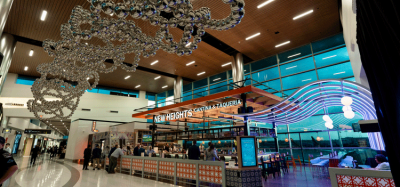Getting the magic and non-aeronautical revenue back post-COVID-19
- Like
- Digg
- Del
- Tumblr
- VKontakte
- Buffer
- Love This
- Odnoklassniki
- Meneame
- Blogger
- Amazon
- Yahoo Mail
- Gmail
- AOL
- Newsvine
- HackerNews
- Evernote
- MySpace
- Mail.ru
- Viadeo
- Line
- Comments
- Yummly
- SMS
- Viber
- Telegram
- Subscribe
- Skype
- Facebook Messenger
- Kakao
- LiveJournal
- Yammer
- Edgar
- Fintel
- Mix
- Instapaper
- Copy Link
Posted: 24 November 2020 | Kian Gould | No comments yet
Attracting over 600 airport industry delegates, AOE’s webinar delivered by CEO Kian Gould shared a practical perspective on the proven ability of digital to drive a post-COVID-19 revenue recovery.
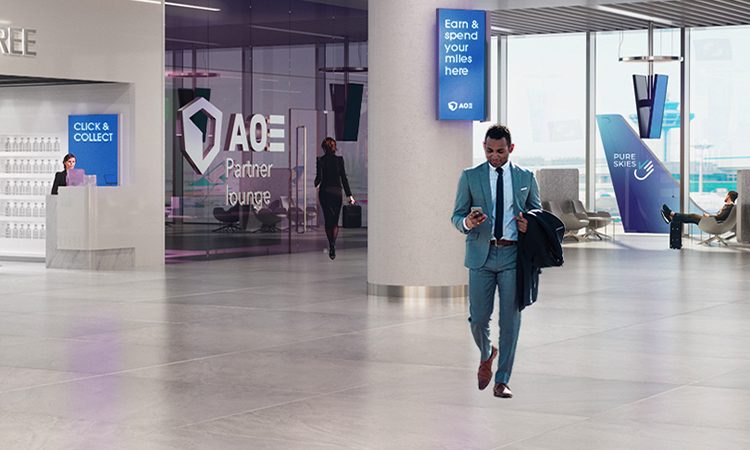

When travellers finally cautiously step back into the terminal, their facemasks signal the hugely raised focus on safety but, behind the masks, there are also significant changes in mindset and behaviour that demand a response from airports seeking routes to revenue.
How do we get the magic – and the revenue – back? Here are six key challenges for today’s airport to thrive tomorrow:
- The digital consumer
The steady growth in consumer adoption of e-commerce (20 per cent of U.S. retail sales now) has accelerated by 10 years just during COVID-19, presenting a significant challenge to the travel retail channel when travellers resume flying.
- The digital traveller
The travel experience is becoming increasingly digitalised and 91 per cent say they’ll spend more time on mobiles, also avoiding stores, staff and fellow travellers.
- Widening cracks in the traditional revenue model
Old problems haven’t gone away: declining conversion and spend, homogenised offers, MAG disputes etc.
- Under-investment by airports in digital
From groceries, to luxuries, to services, domestic operators have rushed to address the customer’s demand for online experiences – airports lag behind.
- Traditional NAR cash cows face increasing pressure
Parking and (physical) advertising revenue sources face major threats from a prolonged crisis and behavioural shifts.
- The lost romance of travel (and travel retail)
The mood is stress and uncertainty; the excitement and engagement has gone.
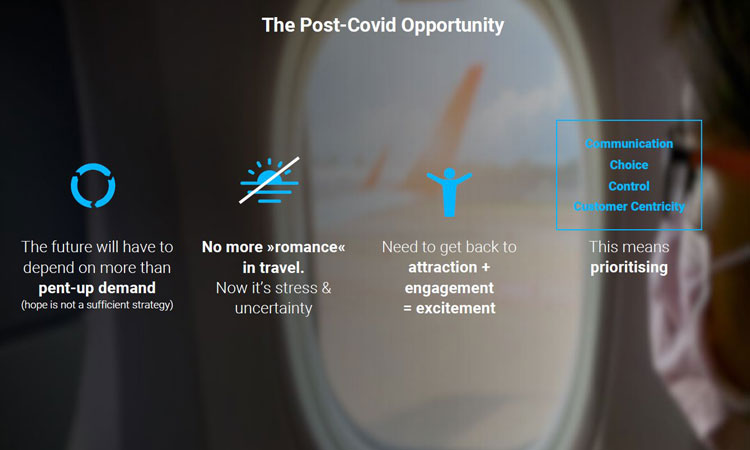

Passengers as digital customers
Revival starts by unleashing the power of the airport brand. Airports should stop thinking like landlords and start thinking as customer experience companies, seamlessly merging offline (which many do superbly) and online experiences. This customer-centric approach enables deeper relationships and powers the seamless digital experiences they demand. Re-defining the customer experience re-defines the NAR opportunities.
Three steps to a digital haven
A digital foundation provides three key revenue drivers:
- Digital customer acquisition
- Retention of those customers through deeply personalised communication
- Selling to them digitally through a huge expansion of choice.
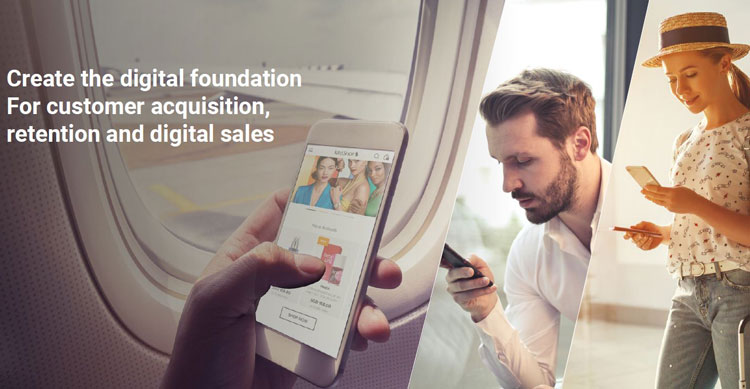

This new, lifestyle brand perspective should not be difficult for airports to adopt – many are already strong, trusted brands in themselves – and will further help with the needed digital customer engagement that underpins this strategy.
Partnership drives further possibilities
Going further, shifting from competition to collaboration with airlines and retailers/brands (both offline and online) in a unified way opens up even bigger, shared opportunities.
Airports bring infrastructure to the party, airlines bring the customers, retailers bring the products, while the brands sprinkle on their gold dust of attraction and excitement. Travel retail can be redefined and reinvigorated, but only if the partnership mechanics are redefined for tomorrow.
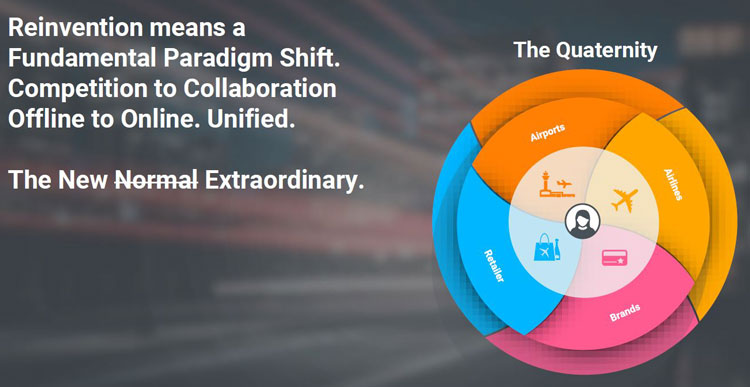

In an optimal shift, partnerships with airlines open the possibilities to shift from the current silos and today’s confusingly disconnected (and wholly physical) customer experience. The intensity of this crisis may well be the tipping factor that finally makes data partnerships with airlines inevitable if a sustainable recovery is to be realised, with airports and airlines in what is effectively an affiliate marketing partnership.
Flying solo
Singapore Airlines offers a model for consideration; it has pioneered a digital approach, creating an e-commerce company (KrisShop) and a powerful lifestyle brand that uses airline data for a customer base on a platform that actually delivers revenue even when its passengers are not flying. In fact, KrisShop quadrupled its sales in just nine months and its e-commerce revenues grew by 500 per cent during the COVID-19 crisis (further details of this transformation are shared in the webinar video).
The huge expansion of the product assortment (from 600 to 30,000) enables the airline to compete with the offer of any major international airport hub. The basket size doubled, conversion tripled, and promotions surged to seven per cent conversion – an unheard-of figure outside Amazon and Alibaba. Partnership with Changi Airport is under early consideration with the potential to set new benchmarks for the industry.
Airports should stop thinking like landlords and start thinking as customer experience companies”
The data challenge
Shifting from competition to collaboration develops a powerful, shared customer view that opens significant new revenue opportunities; no strangers step into your terminal, and you know enough about them to engage them right from the start.


Airports like Heathrow, Frankfurt and Auckland have invested in digital platforms already and achieved great success. But in an increasingly crowded and noisy digital ecosystem in the future, attracting, engaging and retaining customers will be the holy grail of travel retail.
With a digital platform in position the airport can fuel a digital recovery, but it needs to kick-start this process by paying for traffic. Forget airport apps – nobody uses them – it’s all about getting affiliates to direct their audiences to the airport platform. That’s the reality of how e-commerce works already; it’s the core model driving dramatic growth just about everywhere outside travel retail and it’s the market reality of the years ahead.
The industry needs to develop its partnership strengths to break out of its silos and, ultimately, create the ‘one platform, one experience’ the customer demands, transforming airports into powerful lifestyle brands and transport hubs into unique experience hubs.
Airports can still attain stronger revenue, control and long-term stability by seizing their digital destiny, provided they adopt the right strategy that resonates strongly with the post-COVID-19 consumer and traveller of tomorrow.
You can view the full webinar on demand via this link.
Visit AOE for more details of the digital transformation of NAR – including powerful case studies from Heathrow, Auckland and Frankfurt airports.
Related topics
Aeronautical revenue, Airport cities, COVID-19, Non-aeronautical revenue







